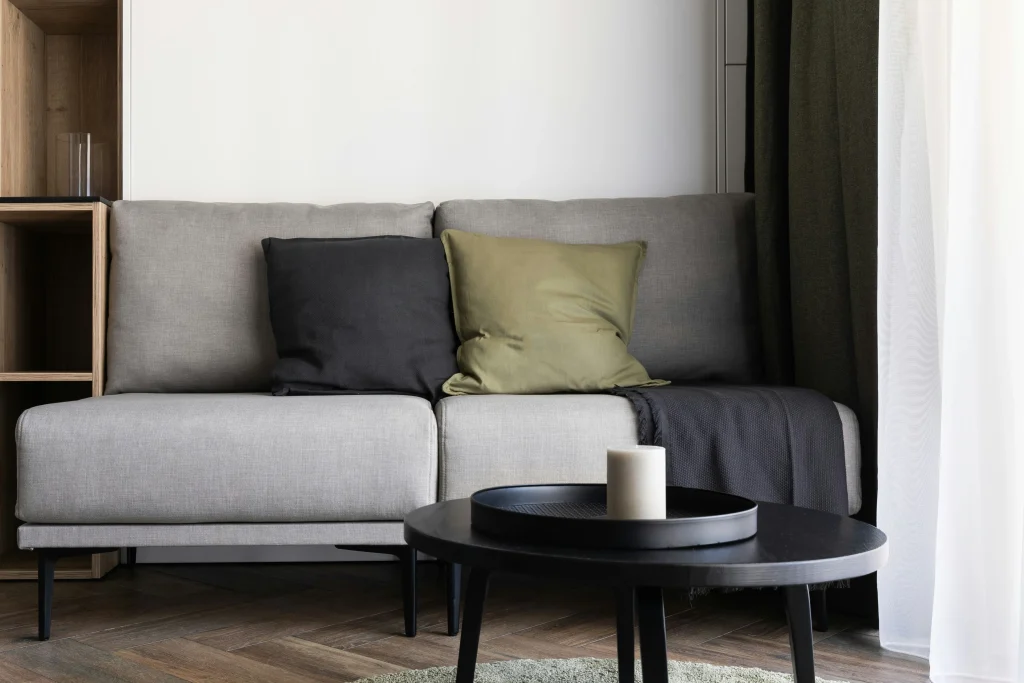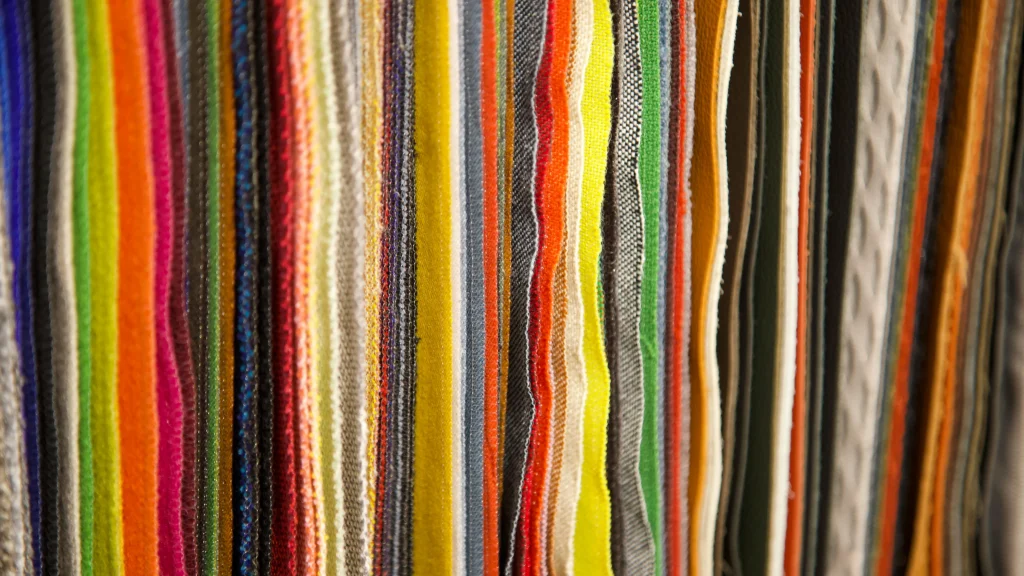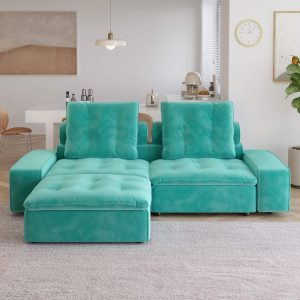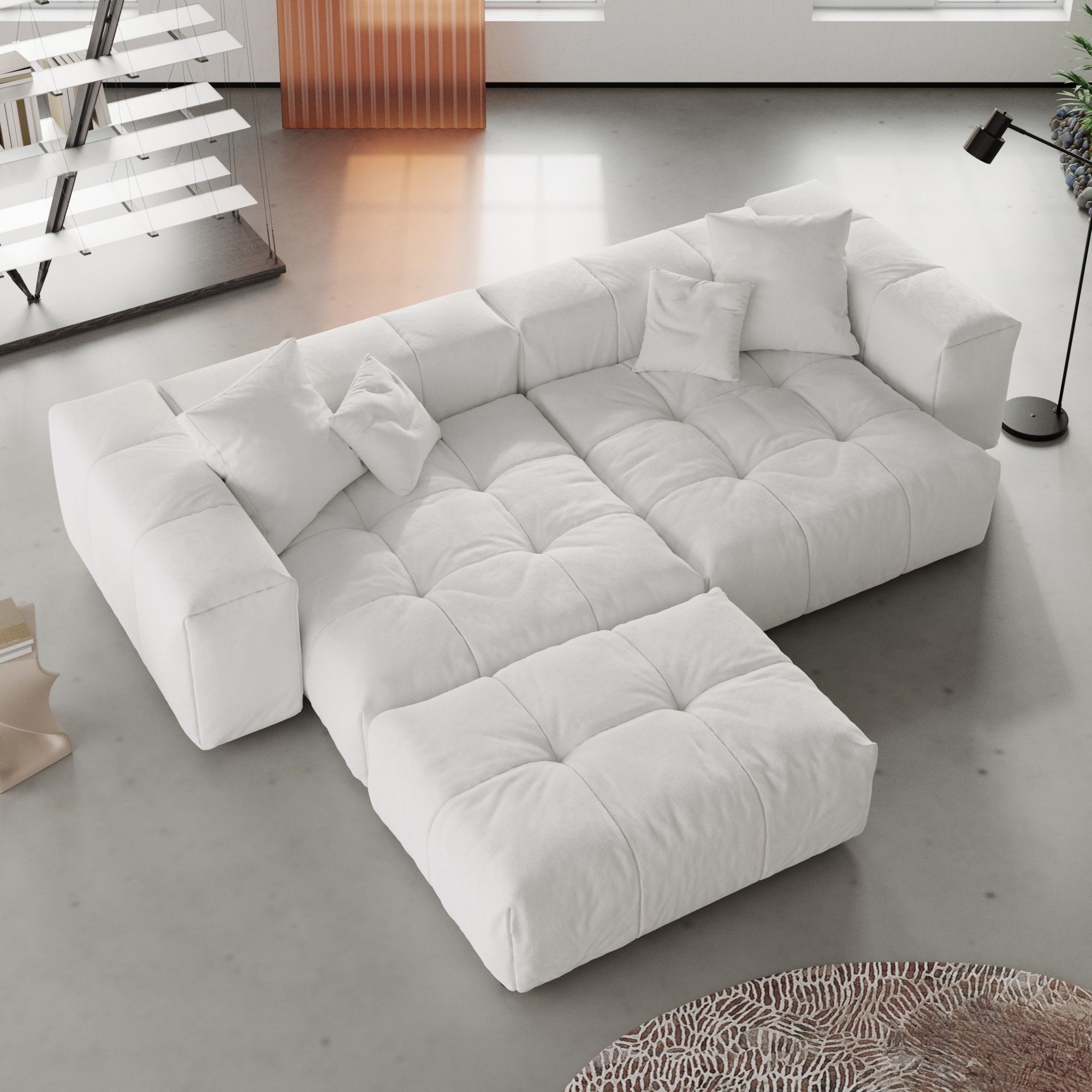Do you ever start sneezing, coughing, or rubbing your eyes when you are just trying to relax in your living room? Things like dust, pet hair, and pollen can hide deep in your sofa and make allergies worse. A washable sofa can help solve this problem. It gives you an easy way to keep your furniture clean and free from many allergy triggers. With the right sofa, you can enjoy a fresher and healthier home. In this guide, you will learn how washable sofas can help you feel more comfortable and breathe easier every day.
Washable Sofas for Allergy Sufferers: Breathe Easier at Home
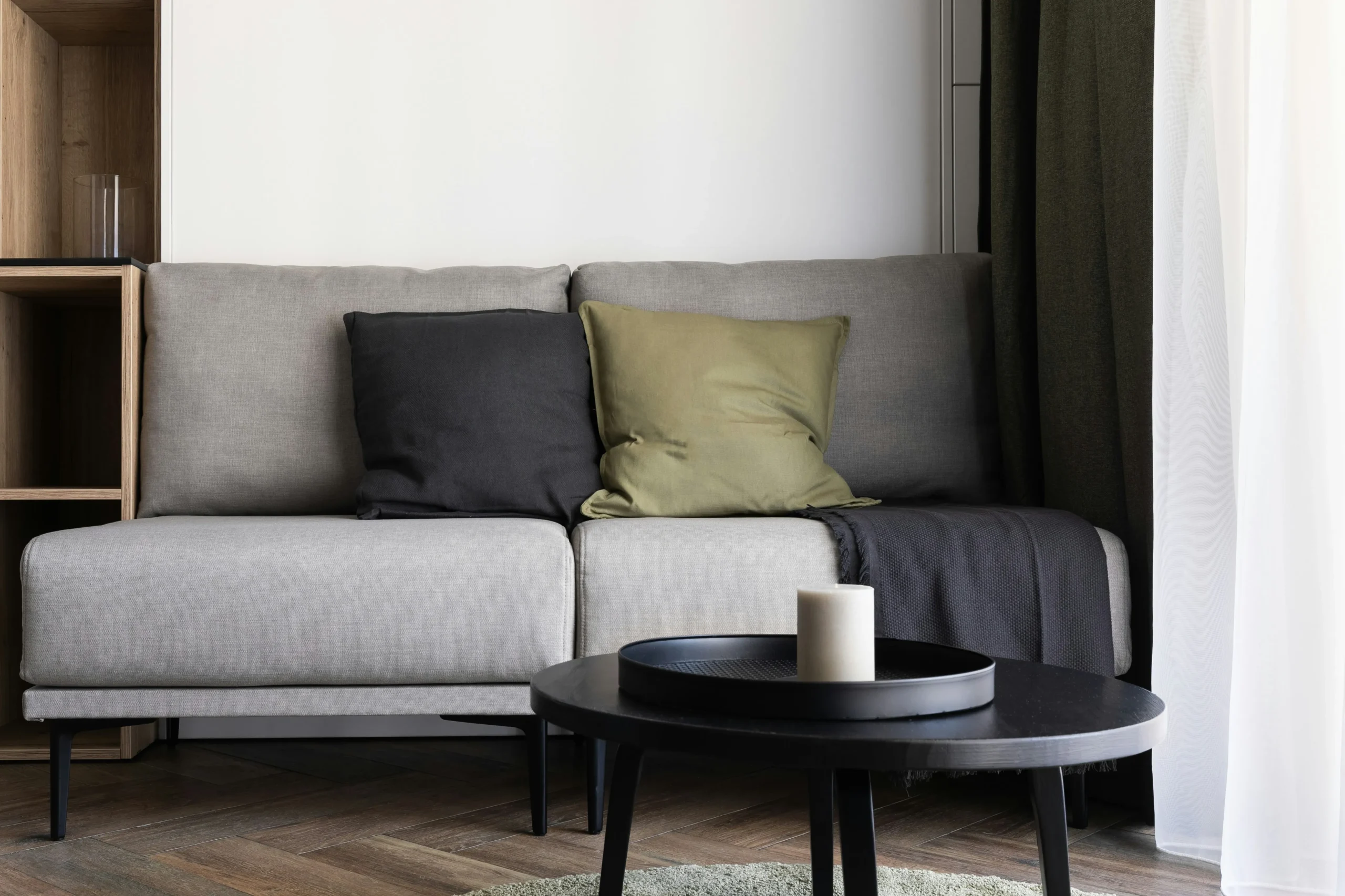
Understanding Allergies and Indoor Air Quality
Common Allergy Triggers Found in Sofas
Sofas can hide more than just the TV remote. They can hold tiny things that make allergies worse.
- Dust mites – These are tiny bugs that live in fabric and love warm, cozy spots.
- Pet dander – Small flakes from your pet’s skin or fur can get stuck in the sofa.
- Pollen and mold spores – These can blow in from outside or grow in damp areas.
How Sofas Can Trap Allergens
Sofas have many soft parts where allergens can hide.
- Upholstery fibers and hidden crevices – Fabric and small gaps are perfect spots for dust and dirt to settle.
- Cushion fillings and dust buildup – Inside the cushions, dust can build up over time.
Why Do Spring Allergies Often Feel Worse Inside?
When spring arrives, it's natural to assume that allergy triggers stay outdoors. In reality, those pesky particles hitch a ride right into your living room. Pollen from blooming trees, grasses, and flowers clings to your clothes, rides in on your shoes, or settles onto your pet’s fur when you both come inside. Open windows are an open invitation for pollen to float in, turning your home into a landing pad for all sorts of spring irritants.
Indoors, conditions can actually make these allergens stick around longer. Sofas and other soft furniture provide warm, cozy nooks where dust mites thrive, especially as temperatures and humidity rise. If there are spring showers or spills that aren’t dried quickly, mold spores can take root deep in fabrics and cushion filling. Even if you’re a diligent cleaner, everyday dust builds up in seams, hidden crevices, and beneath cushions—bringing along a mix of pollen, pet dander, and mold spores.
The end result? Indoor air can quickly fill up with allergy triggers, particularly in all those soft spots we love to lounge on. That’s why it often feels like allergy season follows you indoors, making comfortable spaces less inviting for anyone with sensitivities.
Why Washable Sofas Are Ideal for Allergy Sufferers
Easy to Clean Fabric Surfaces
One of the best things about a washable sofa is how easy it is to clean. Many come with covers you can take off and put in the washing machine. You can do this whenever they collect dust, pet hair, or pollen. This helps keep your sofa fresh with very little effort. Some fabrics are also water and stain resistant. They stop spills and dirt from soaking in. This makes it easier to wipe things away before they turn into stains.
Reducing Allergen Build Up
Washing your sofa covers often helps stop allergens from building up. Dust mites, pollen, and pet dander do not have time to settle deep into the fabric. This can help a lot if you have allergies. Washable fabrics also let you clean with gentle soap instead of strong chemicals. This keeps your sofa fresh and is kinder to your skin and breathing.
Helping the Air Stay Clean at Home
A clean sofa looks nice and can also help you breathe better. When allergens are removed, fewer tiny particles float into the air when someone sits or moves around. This can make your home feel fresher and more comfortable. It can also make a big difference for people who are sensitive to dust or pollen. Over time, keeping your sofa clean is an easy way to help the air in your home stay healthy.
Key Features to Look for in a Washable Sofa for Allergy Relief
Hypoallergenic Fabrics
Choose fabrics that are gentle on the skin and less likely to hold allergens. Cotton and microfiber are good options. They are soft, breathable, and easy to clean. These fabrics can help lower the amount of dust and pollen trapped in your sofa.
Performance Fabrics: Extra Protection for Allergy Sufferers
Performance fabrics are specially made materials first used in places like hospitals and hotels. Now, these same fabrics are designed for home furniture to help make cleaning easier and keep allergy triggers at bay. What makes performance fabrics stand out is their ability to repel dust, pet hair, and dander more effectively than standard upholstery.
Many performance fabrics are made without harmful chemicals like PFCs or PFAs, which means they’re gentler for sensitive skin and lungs. Look for options certified—this indicates they've been tested to be free from unhealthy substances. These fabrics are tough enough for frequent washing, so you can clean away allergens often without wearing them out. Some are even made to resist pet scratches and sticky stains, making it easier to keep your sofa looking and feeling fresh, whether you have pets or just want a cleaner, healthier home.
Removable and Washable Cushion Covers
Look for sofas with covers you can take off easily. This makes washing simple and quick. Covers with smooth zippers or easy fastening save time when removing and putting them back. Regular washing keeps your sofa fresh and reduces allergens.
Using Protective Covers Under Couch Cushions
Adding an extra layer of protection under your cushion covers can help keep allergens out of your sofa. Zippered encasements—similar to mattress protectors—act as a barrier between the cushion filling and the outer fabric. This makes it harder for dust mites, pet dander, and pollen to settle inside the foam, where they are much tougher to remove.
Look for tightly woven, allergy-proof covers made from materials like microfiber or special barrier fabrics. These can help block tiny particles from getting trapped deep in your sofa’s cushions. Protective covers are a great option if anyone in your home has serious allergies or asthma, and they make routine washing more effective since most of the allergens are caught on the outer layers. Simply unzip and launder as needed, keeping the inner cushion cleaner and your sofa more allergy-friendly.
Stain Resistant and Quick Dry Properties
Some sofas have fabrics that resist stains and dry quickly. This makes the cleaning process faster and prevents moisture from staying in the fabric. Less moisture means fewer chances for mold or dust mites to grow.
Modular and Lightweight Designs
A modular or lightweight sofa is easier to move. This helps you clean under and around it without much effort. Being able to reach every corner means less dust and better air quality in your home.
Minimal Seams and Simple Designs for Fewer Allergens
Sofas with a smooth, simple design are helpful for allergy prevention. When a sofa has fewer seams, buttons, or deep tufts, there are fewer places for dust, pet hair, and other allergens to get trapped. Flat surfaces and clean edges make it much easier to wipe down your sofa quickly. Choosing a style with less decoration means there’s less for allergens to hide in, so you can keep your furniture—and your air—cleaner with less effort.
Elevated Sofa Frames for Easier Cleaning
Sofas with taller legs can make a big difference in keeping your living space allergy-friendly. When your sofa sits higher off the ground—about 5 to 6 inches or more—it is much easier to reach underneath with a vacuum or mop. This means less dust and pet hair will pile up in those hard-to-clean spots.
Better air can flow under elevated furniture, too. Good airflow underneath the sofa helps prevent moisture from getting trapped, which is important because damp spaces are the perfect place for mold to grow. Choosing a design with raised legs will help you keep every corner of your room cleaner and more comfortable if you deal with allergies.
Comparing Washable Sofa Materials for Allergy Control
Microfiber Sofas
Microfiber feels soft and is tightly woven. This helps stop dust and allergens from going deep into the fabric. It is easy to clean and dries fast after washing. Microfiber is a good choice for people with allergies because it blocks many triggers. But some microfiber can attract static, which makes pet hair stick more.
Leather and Faux Leather Sofas
Leather and faux leather do not hold dust or pet hair easily. Their smooth surfaces are easy to wipe clean. This makes them a good option if you want furniture that is low-maintenance and allergy-friendly. However, these sofas may not feel as soft or warm as fabric ones. This might matter if you want extra comfort.
Organic and Natural Fabric Options
Organic fabrics like cotton or linen let air flow and are less likely to cause skin irritation. They are good if you want natural materials in your home. But these fabrics may need more cleaning because they soak up stains and allergens faster. When choosing organic fabrics, look for ones that do not have harsh chemicals. This helps keep them good for allergy sufferers.
Is Synthetic Velvet a Good Choice for Allergy Sufferers?
Synthetic velvet can be a smart option if you struggle with allergies. Unlike traditional velvet made from silk or cotton, synthetic versions (like those made from polyester or nylon) are less likely to trap dust, pollen, and pet hair. The fibers in synthetic velvet are usually tightly woven and have a shorter pile, which means there are fewer places for allergens to settle and hide.
Another advantage is that synthetic velvet is often easier to clean. Many synthetic velvets allow for spot cleaning, and some even come with removable covers that you can wash regularly. This helps keep your sofa fresh and reduces the buildup of irritants.
On top of that, synthetic velvet is often finished with stain-resistant coatings, making spills and messes quicker to wipe away before they can soak in. For the most allergy protection, consider synthetic velvets that are labeled as commercial grade—they’re designed for durability and frequent cleaning, which fits perfectly with an allergy-friendly lifestyle.
Cleaning Tips to Maximize Allergy Protection
Washing Frequency and Best Practices
Wash your sofa covers often to keep allergens away. For allergy relief, washing every one to two weeks works best. This helps get rid of dust mites, pollen, and pet hair before they build up. Always follow the care instructions on your sofa covers to avoid damage.
Choosing the Right Detergent
Use gentle, fragrance-free detergents made for sensitive skin. Hypoallergenic detergents keep your sofa clean without causing irritation or allergies. Avoid strong chemicals and fabric softeners that can leave behind residue.
Vacuuming and Steam Cleaning
Vacuum your sofa often to remove dust and pet hair from cushions and frames. A vacuum with a brush works well to clean hard-to-reach spots. Steam cleaning is also a good way to kill dust mites and freshen your sofa without using harsh chemicals.
Are Allergen-Reducing Sprays Effective on Sofas?
Allergen-reducing sprays can be a helpful tool for keeping your sofa fresh and limiting potential triggers. Many sprays, such as those made with ingredients like tannic acid or plant-based oils, are designed to break down or neutralize common allergens from dust mites, pet dander, and pollen. They work best as a supplement to regular washing and vacuuming—think of them as a quick boost rather than your main line of defense.
To use these sprays safely and effectively, follow these simple steps:
- Always read and follow the manufacturer's instructions.
- Spray the product lightly and evenly across sofa surfaces.
- Allow it to dry completely before using the sofa again.
- If you prefer natural alternatives, a diluted solution of eucalyptus or tea tree oil can help repel dust mites—but test any spray on a hidden area first to check for colorfastness.
While sprays can’t replace regular cleaning, they can add an extra layer of protection, especially during allergy season or after a deep clean. Used together with frequent washing, vacuuming, and choosing the right materials, these sprays can help make your living space more comfortable for allergy sufferers.
Professional Cleaning for Deep Allergen Removal
Even with regular at-home maintenance, it's important to have your sofa professionally cleaned about once a year to keep allergens at bay. Professionals use deep-cleaning techniques—like hot water extraction or steam cleaning—that reach areas regular vacuuming and washing can miss. For added peace of mind, ask your cleaning service to use hypoallergenic solutions.
If you have a leather or faux leather sofa, look for specialists experienced in caring for these materials to maintain both cleanliness and condition. Scheduling your professional cleaning during dry weather helps your sofa dry faster, reducing the risk of mildew or mold growth.
Regular annual cleaning, in combination with frequent at-home care, ensures your sofa stays fresh and supports a healthier home environment.
Cost vs. Health Benefits
Choosing a washable sofa may cost a bit more at first, but it is worth the investment. These sofas help keep your home cleaner and reduce allergens that can cause health problems.
Over time, having a sofa that is easy to clean can save you money on cleaning services and replacements. It also helps your family feel more comfortable and healthy every day.
Conclusion
Choosing a washable sofa helps keep your home cleaner and healthier. It makes it easier to remove dust, pet hair, and other allergens that can cause problems.
Remember to pick a sofa with easy-to-clean covers and allergy-friendly fabrics. This way, you get both comfort and a fresh living space.
A washable sofa lets you enjoy a cozy home without worrying about allergies. Clean living and comfort can go hand in hand.

